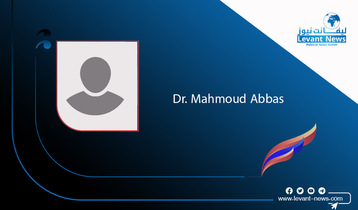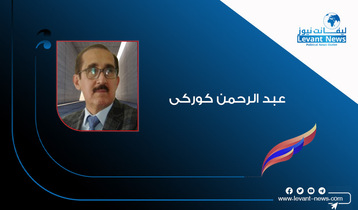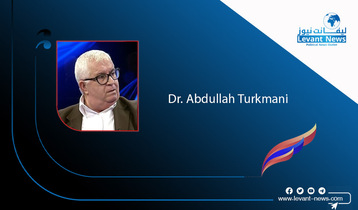-
Syrian war crimes: will they go unpunished ?

Sednaya deserves the adjective notorious. Amnesty International has called it a “human slaughterhouse.” In 2011 Islamists jailed after previously being encouraged to fight the US in Iraq were freed in a move designed to subvert a peaceful uprising and promote Bashar al-Assad’s jihadi narrative. The prison soon filled up with those arrested in anti-government protests across the country.
The latest report, by the Association of Detainees and The Missing in Sednaya Prison (ADMSP), was based on interviews with over 400 former prisoners. “The Syrian regime’s methods ..may have been known to some…but this shows, by providing figures and testimonies, how the regime used the mechanism of arrest and enforced disappearance as one of the tools of war against Syrian society,” said Diab Serriyah, coordinator of ADMSP.
Ninety-percent of detainees said they had suffered psychological and physical torture. They described mock executions, being forced to watch other inmates being tortured, and threats against their families. Almost all reported being whipped or beaten while trapped inside a tyre. Other forms of torture included being suspended by the arms, electrocution, and the so-called “German chair”, in which inmates are tied around a chair with pressure applied.
Only 5 percent were tried under the Syrian penal code and 96 percent were not informed of their sentences in proceedings that often lasted only a few minutes. Past reports have suggested that as many as 100,000 Syrians could have been “disappeared” in regime prisons since the start of the war.
In 2017 the US said it believed the Syrian government had installed a crematorium in Sednaya to dispose of detainees’ remains with little evidence.
International media coverage of Syria has faded in recent times – despite a surge last month over the Turkish offensive against Kurdish areas in the north and President Donald Trump’s announcement of the withdrawal of US forces.
But there are occasional glimmers of encouraging news. One was that Syrian refugees in Norway have signed up to a European-wide drive for justice over torture, extra-judicial killings and other abuse by Assad forces, providing evidence linking their mistreatment to 17 named, high-ranking officials.
Another came a few weeks earlier when German prosecutors announced that they were charging two alleged former Syrian secret service officers - Anwar Raslan and Eyad al-Gharib – who were arrested in February in a joint operation by German and French police. Germany has also issued an international arrest warrant for Jamil Hassan, the head of the Syrian Air Force Intelligence Directorate, long the most feared branch of regime security, though he cannot be prosecuted in absentia.
And in August the UN secretary-general, Antonio Guterres, announced the creation of a UN “board of inquiry” into war crimes that took place in a regime offensive against Idlib, including those that have damaged or destroyed hospitals.
Horrific testimony and documentation of atrocities has been filtering out of Syria since shortly after the war began, but a divided and often paralysed international community has found it hard to respond effectively with a concerted push for accountability.
A potentially key moment came in January 2014, when a former military policeman identified only as “Caesar” escaped from Syria with almost 55,000 photographs of victims who died under torture during detention. Caesar’s photos showed emaciated corpses labelled with prison numbers. Some had no eyes while others showed signs of strangulation or electrocution. Families were told that the cause of death was either a “heart attack” or “breathing problems.”
Part of the problem is that Syria – along with the US, Russia, Israel and other countries - is not a party to the treaty that established the international criminal court in The Hague in 2002. Another part is that Russia and China have repeatedly vetoed efforts to mandate the ICC to set up a special tribunal for Syria. The UN Human Rights Council international commission of inquiry on Syria, created in 2011, has a mandate to investigate violations of human rights law – but Assad has refused to cooperate with it.
Carla del Ponte, a Swiss prosecutor who had previously investigated war crimes in Rwanda and former Yugoslavia, resigned two years ago from the Syria commission. “In this case nothing happens,” she complained. “It’s unbelievable. It’s a disgrace for the international community and particularly for the security council.”
NGOs, activists and human rights lawyers are painfully aware of these limitations but have been working to seek justice and to signal an end to impunity. Still, despite some progress, the signs are not encouraging: durable peace in Syria will be hard to achieve without justice delivered by an international rules-based system that respects universal rights for all.
Tags
You May Also Like
Popular Posts
Caricature
BENEFIT Sponsors BuildHer...
- April 23, 2025
BENEFIT, the Kingdom’s innovator and leading company in Fintech and electronic financial transactions service, has sponsored the BuildHer CityHack 2025 Hackathon, a two-day event spearheaded by the College of Engineering and Technology at the Royal University for Women (RUW).
Aimed at secondary school students, the event brought together a distinguished group of academic professionals and technology experts to mentor and inspire young participants.
More than 100 high school students from across the Kingdom of Bahrain took part in the hackathon, which featured an intensive programme of training workshops and hands-on sessions. These activities were tailored to enhance participants’ critical thinking, collaborative problem-solving, and team-building capabilities, while also encouraging the development of practical and sustainable solutions to contemporary challenges using modern technological tools.
BENEFIT’s Chief Executive Mr. Abdulwahed AlJanahi, commented: “Our support for this educational hackathon reflects our long-term strategic vision to nurture the talents of emerging national youth and empower the next generation of accomplished female leaders in technology. By fostering creativity and innovation, we aim to contribute meaningfully to Bahrain’s comprehensive development goals and align with the aspirations outlined in the Kingdom’s Vision 2030—an ambition in which BENEFIT plays a central role.”
Professor Riyadh Yousif Hamzah, President of the Royal University for Women, commented: “This initiative reflects our commitment to advancing women in STEM fields. We're cultivating a generation of creative, solution-driven female leaders who will drive national development. Our partnership with BENEFIT exemplifies the powerful synergy between academia and private sector in supporting educational innovation.”
Hanan Abdulla Hasan, Senior Manager, PR & Communication at BENEFIT, said: “We are honoured to collaborate with RUW in supporting this remarkable technology-focused event. It highlights our commitment to social responsibility, and our ongoing efforts to enhance the digital and innovation capabilities of young Bahraini women and foster their ability to harness technological tools in the service of a smarter, more sustainable future.”
For his part, Dr. Humam ElAgha, Acting Dean of the College of Engineering and Technology at the University, said: “BuildHer CityHack 2025 embodies our hands-on approach to education. By tackling real-world problems through creative thinking and sustainable solutions, we're preparing women to thrive in the knowledge economy – a cornerstone of the University's vision.”
opinion
Report
ads
Newsletter
Subscribe to our mailing list to get the new updates!




















